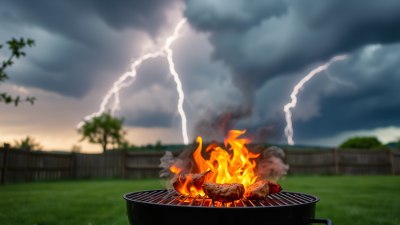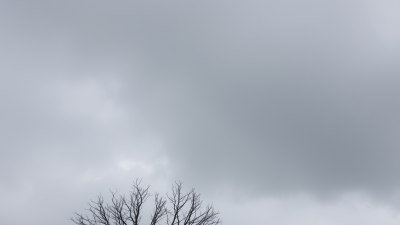How the Warmth of the Air Affects Our Social Habits
Explore how air temperature influences our social behavior, interactions, and daily habits in various environments.

Human social behavior is deeply intertwined with environmental factors, among which temperature plays a crucial role. The warmth of the air not only impacts our physical comfort but also significantly influences the way we interact with others, form relationships, and engage in social activities. Understanding how air temperature shapes our social habits offers valuable insight into organizing public spaces, planning events, and improving social cohesion.
The Psychological Effects of Temperature on Social Interaction
Temperature is more than a physical sensation; it has psychological consequences that affect mood, cognition, and behavior. Warmer air often correlates with increased feelings of comfort and relaxation, which can lead to more open and frequent social interactions. Conversely, colder temperatures may induce feelings of isolation or withdrawal, reducing sociability. Psychological studies suggest that warm environments evoke positive emotional responses, encouraging people to seek companionship and engage socially.
One theory posits that warmth signals safety and security, creating a conducive atmosphere for trust and bonding. This is supported by research indicating that individuals in warmer contexts are more likely to express empathy and cooperation. On the other hand, colder settings might trigger a focus on self-preservation, diminishing willingness to engage convivially.
Seasonal Variations and Their Impact on Social Patterns
Seasonal temperature changes profoundly affect social habits. In warmer months, people tend to spend more time outdoors, frequent parks, attend festivals, and partake in community events. The increased exposure to daylight and warmth extends the time available for social interaction and promotes physical activities involving groups, such as sports and outdoor dining.
In contrast, colder seasons usually result in more indoor gatherings, which can be either intimate or exclusive depending on cultural context and available space. The shorter days and harsh weather conditions limit opportunities for spontaneous socializing, leading to a decline in casual encounters. However, colder times also foster traditions centered around indoor warmth, such as holiday celebrations and communal meals, which strengthen interpersonal bonds within smaller circles.
Warmth and Public Space Utilization
The design and use of public spaces are greatly influenced by average temperatures. Warm climates encourage the development of open-air markets, pedestrian zones, and outdoor cafes, which facilitate socializing and community engagement. Urban planning in such contexts often prioritizes shaded areas and water features to sustain comfort during peak heat.
In colder climates, enclosed public venues like shopping malls, libraries, and cultural centers become essential social hubs, providing refuge from the cold while enabling interaction. These spaces are often heated and designed for prolonged occupancy, reflecting the need for warmth and comfort. Seasonal adaptation is also common, such as the incorporation of heated outdoor seating or winter festivals to maintain social vibrancy despite unfavorable weather.
Air Warmth's Role in Communication Styles
Ambient temperature can subtly alter how we communicate. In warm environments, the tendency is towards more expressive and open body language, increased eye contact, and spontaneous conversation. This warmth-induced expressiveness enhances feelings of friendliness and approachability, facilitating deeper social connections.
Conversely, in colder surroundings, people may adopt more reserved postures, minimizing physical exposure and maintaining personal space more rigidly. Speech patterns might be more concise, and interactions often become more task-oriented than relational. Such behavioral adjustments highlight an unconscious strategy to maintain warmth and reduce vulnerability.
Influence on Social Gatherings and Celebrations
Warm air encourages larger and more diverse social gatherings by reducing discomfort and enabling activities that require movement and space. Outdoor weddings, barbecues, street parties, and music festivals typically flourish during warm seasons, bringing communities together in shared joy. The pleasant weather invites prolonged socializing and participation, making events lively and inclusive.
In contrast, colder temperatures often shift the focus towards cozy indoor events with close-knit groups. Holiday dinners, movie nights, and indoor games are preferred, fostering a different but equally valuable social dynamic. The need to generate heat through body warmth and shared experiences cultivates intimacy and strengthens bonds on a personal level.
Warmth, Alcohol, and Social Risk-Taking
Warm environments have been associated with increased consumption of alcoholic beverages during social occasions. Alcohol, combined with the physiological effects of warmth, can lower inhibitions, leading to greater sociability and sometimes increased risk-taking behavior. This phenomenon influences nightlife patterns, party cultures, and even social norms around personal boundaries.
Studies have highlighted that warmer temperatures encourage outdoor drinking spots and social hubs where people feel more relaxed and adventurous. However, moderation and safety considerations remain critical, as the amalgamation of warmth and alcohol consumption can escalate certain social risks.
Workplace Social Dynamics and Air Temperature
Air temperature in work environments directly impacts employee interactions and collaboration. Warm, comfortable office temperatures promote relaxed atmospheres conducive to informal discussions, brainstorming sessions, and teamwork. Colder environments may result in reduced social interaction, as employees focus more on their tasks to minimize exposure to discomfort.
Adaptive temperature regulation, such as personalized climate controls, can enhance social cohesion by allowing individuals to feel comfortable and, thereby, more willing to engage with colleagues. Organizations mindful of thermal comfort have reported improved communication and stronger workplace relationships.
The Biological Mechanisms Linking Warmth to Sociality
At a biological level, warmth affects neural and hormonal processes that regulate social behavior. Exposure to warm temperatures has been shown to release oxytocin—a hormone linked to trust, bonding, and reduced stress. Additionally, warmth can lower cortisol levels, diminishing anxiety and fostering a more relaxed social state.
Thermoreceptors in the skin communicate with brain regions governing emotions and social cognition, establishing a direct physical connection between temperature perception and social responses. These mechanisms explain why physical warmth often metaphorically corresponds to social warmth in human experience and language.
Cultural Differences in Temperature and Social Habits
Cultural backgrounds shape how warmth influences social behavior. In some cultures, warm climates are associated with open, communal lifestyles featuring extended family gatherings, street socializing, and vibrant public celebrations. Conversely, cultures in colder regions might develop social customs emphasizing home-centered activities and formalized social events.
Thus, temperature interacts with cultural norms, creating diverse social habits. Understanding these variations is essential for global communication, tourism, and designing culturally sensitive public policies.
Modern Technology and Mitigating Temperature Effects on Social Behavior
Technological advancements, such as heating, air conditioning, and climate-controlled venues, have lessened some impacts of outdoor temperature on social habits. These innovations allow people to maintain comfort regardless of weather, facilitating year-round social activities and mitigating seasonal declines in interaction.
Digital communication technologies also extend social connectivity beyond physical climates. Virtual meetings, online communities, and social media provide alternative platforms for interaction, especially when extreme temperatures discourage in-person gatherings.
Implications for Urban Planning and Social Policy
Recognizing how air warmth affects social habits guides urban development and social policymaking. Cities can design adaptable spaces that encourage socializing in various temperatures, using elements like green spaces, thermal shelters, and flexible infrastructure for outdoor and indoor use.
Policymakers can schedule community programs considering seasonal temperature shifts to maximize participation and inclusivity. Additionally, promoting energy-efficient climate control technologies can improve social environments sustainably.
Future Research Directions
Ongoing research aims to deepen understanding of temperature’s role in social dynamics. This includes exploring individual differences in thermal sensitivity, long-term societal trends amid climate change, and cross-cultural comparisons. Integrating psychological, biological, and environmental perspectives will enrich strategies to enhance social well-being through environmental design.
Furthermore, investigating the interplay between temperature and digital social technologies may reveal new ways to foster connection in diverse climates and contexts.
The complex relationship between air warmth and social habits underscores how environmental factors shape human behavior beyond basic physiological needs. By appreciating and adapting to these dynamics, societies can cultivate healthier, more connected communities, regardless of the weather challenges they face.











